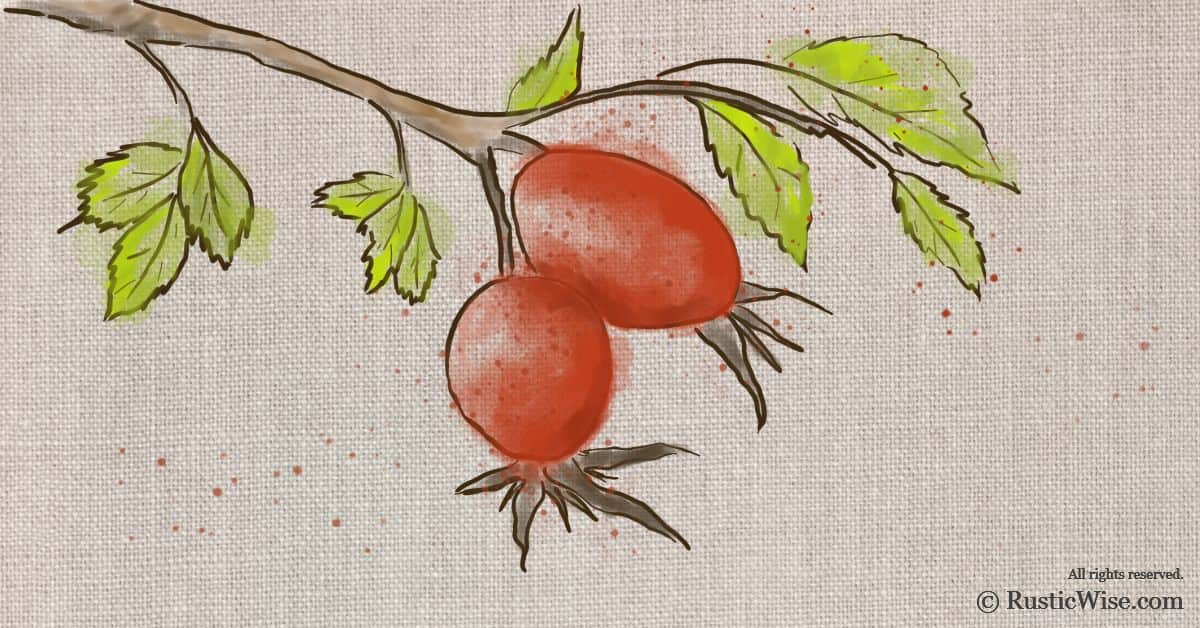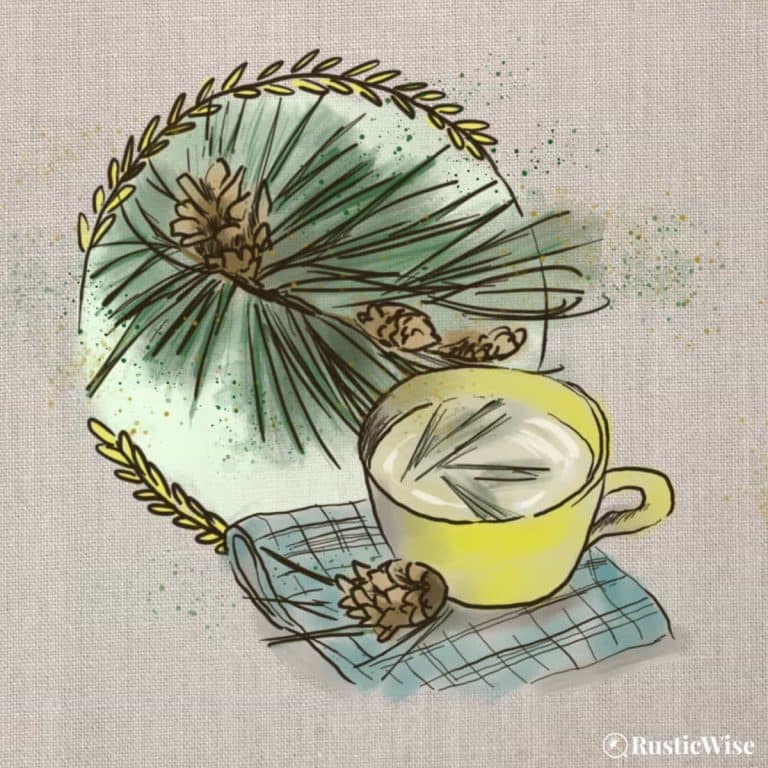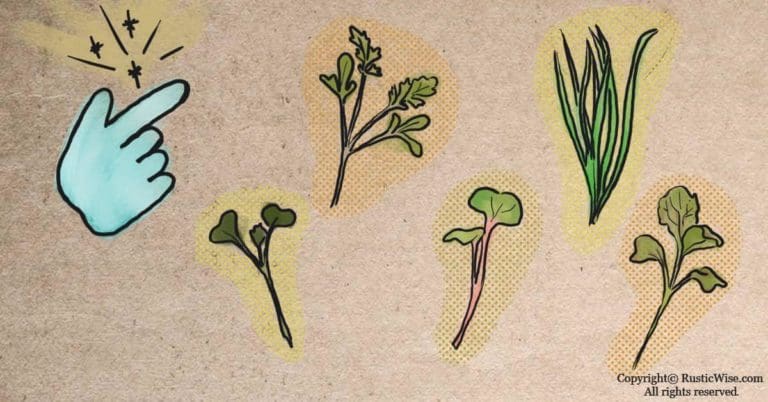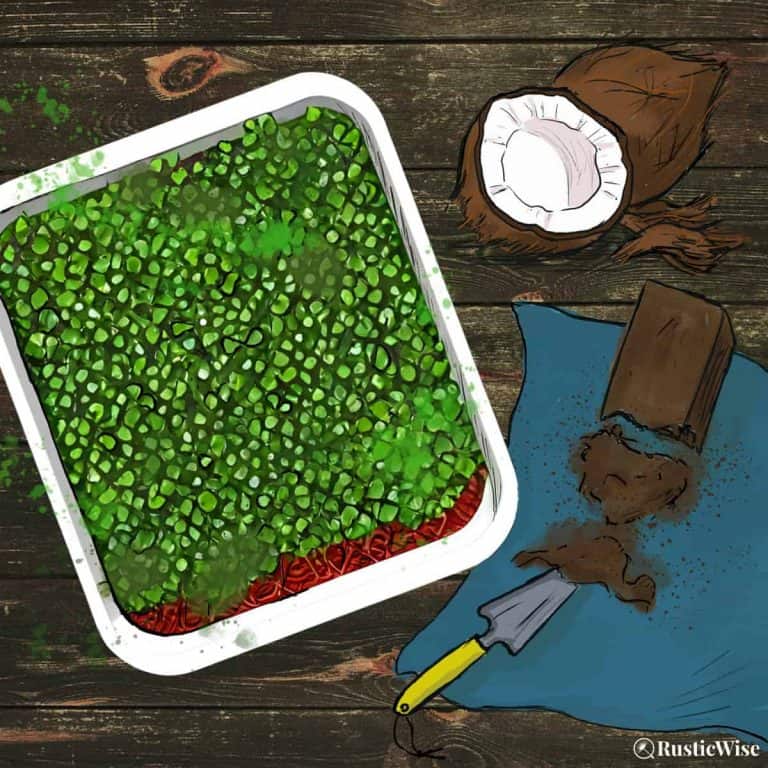When to Harvest Rosehips and Easy Ways to Prepare Them
RusticWise is supported by its readers. When you purchase through links on our site, we may earn an affiliate commission. As an Amazon Associate, we earn from qualifying purchases. Thank You!
Roses with all their beauty and fragrance steal the show. Most people focus solely on how to produce the best blooms that the rosehips themselves are often snipped off without a second thought. If the blooms are the star of the show, the rosehips are the workhorses producing seeds and serving as a nutrient-rich source of vitamin C.
Rosehips are what’s left after the roses have bloomed. Ranging in color from orange-red to scarlet, rosehips are the round “fruit” and seedpod of the rose bush.
Roses are members of the Rosaceae family. This is also the same family that apples and cranberries belong to which makes sense as rosehips share a similar tart taste profile. Rose petals and rosehips are both edible with a variety of uses including rosehip tea. Those wise to the benefits of rosehips will want to harvest this prized fruit.
When to harvest rosehips
So, how do you know when to harvest rosehips?
Pick them too soon, and they’ll be too sour. Wait too long, and they turn mushy—best left for the birds. The optimal time to pick rosehips is in late fall about a week after the first frost. As the weather gradually cools down, keep an eye on your rose bushes to check on the color and texture. You’ll know they’re ready for harvesting when the rosehips:
- Are a rich red color.
- Are slightly soft to the touch with smooth, unwrinkled skin.
“Roses do not bloom hurriedly; for beauty, like any masterpiece, takes time to blossom.”
― Matshona Dhliwayo
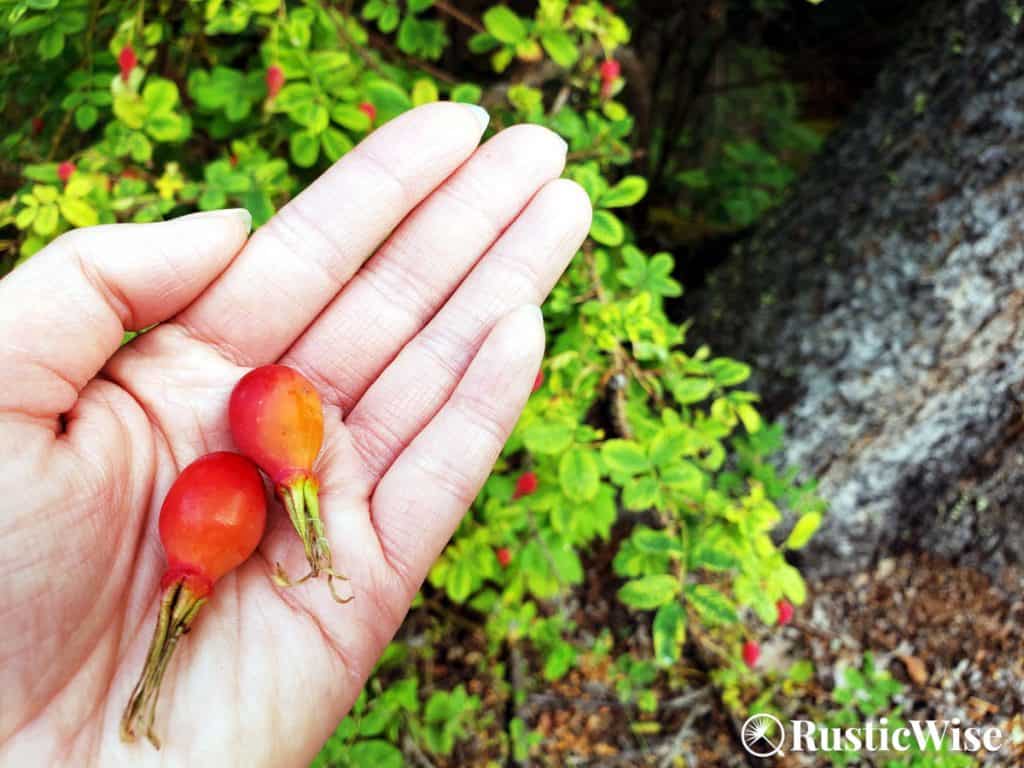
Which rose varieties to harvest
There are so many varieties of roses growing wild or cultivated in gardens that it can be tricky to determine the ones that produce the best rose hips. Some types of roses produce rosehips that are too small and not worth your time to harvest. Try to find rose bushes of the following varieties which produce larger rosehips:
- Japanese rose (Rosa rugosa). Also called beach rose, or rugosa rose, this variety produces large hips and large blooms that are typically pink (sometimes white). It has oval-shaped leaves that look slightly wrinkly with deep veins and a leathery texture. When ripe, Rosa rugosa have rosehips that resemble cherry tomatoes that are around 1 inch (2–3 centimeters) wide. This is one of the best rose bushes for harvesting rosehips.
- Sweetbriar rose (Rosa rubiginosa). Also called eglantine rose, you might smell this rose bush’s lovely apple-scented fragrance before you see it. Sweetbriar roses are five-petaled, have yellow stamens, and are typically a light pink color. Watch out for its many thorns! Leaves are rounded and end in a point with many tiny hairs. Sweetbriar rosehips are a reddish color, and may be oval or round-shaped. The rosehips are roughly 1 inch (2–3 centimeters) wide. The fragrant leaves are sometimes used in potpourri.
- Dog rose (Rosa canina).This wild rose variety is a climber and sometimes reaches to tree tops. Flowers are usually pale pink with five petals and yellow stamens. Leaves are arranged in pinnation, with stems covered in sharp prickles. Many foragers love dog rose for its high vitamin C content.
How to harvest rosehips
Before picking any rose petals or rosehips, make sure that the area hasn’t been treated with herbicides or pesticides. Avoid harvesting from rose bushes that are close to roadways as they’ve likely been sprayed, or may contain pollutants.
Like sweet ice wine produced from frozen grapes, a touch of frost helps rosehips to develop a sweeter flavor. Set out in fall when it’s just starting to get chilly, but not so cold that rosehips have frozen like ice cubes.
Bring a pair of gloves to protect yourself from prickly thorns, scissors (just in case), and a basket or cloth bag. Many rosehips can be plucked by hand—you may not even need the scissors at all. Remember to pick the rosehips that are a rich red color, have smooth skin, and are still slightly firm to the touch. Sometimes rosehips might not look perfect, but if their fragrance is still pleasant, and they’re not too mushy or wrinkly, they still might be good for the pickin’!
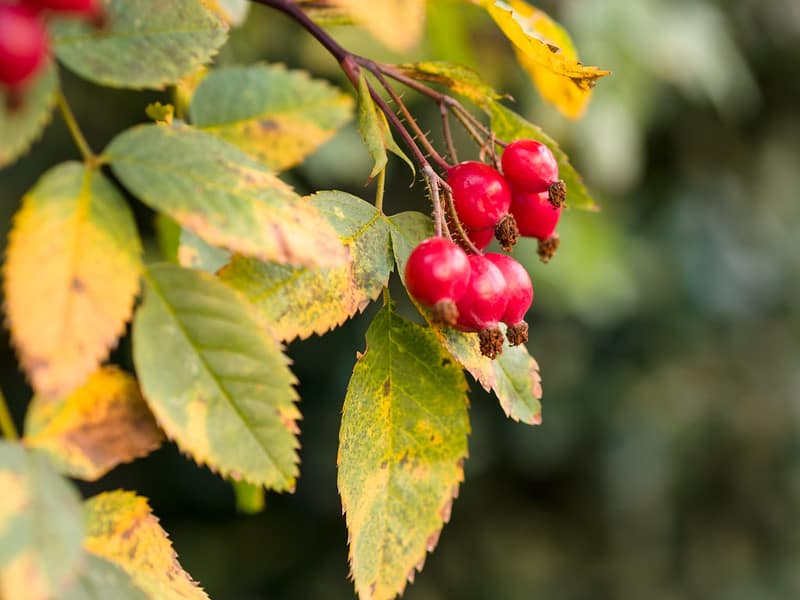
Credit: James Petts / Flickr, Rosehip
Ways to prepare and use rosehips
Treat rosehips like you would any other fruit and store them in the fridge to keep them cool. Try to process them as soon as possible to preserve the vitamin C content. If you’re looking to get the most vitamin C, use fresh rosehips as processing and drying reduces the vitamin C content.
- Wash rose hips in cold water in a colander and cut off both ends with scissors.
- Separate the larger rosehips from the smaller rosehips. Split larger rosehips open to remove the seeds. Smaller rosehips can be preserved whole and used for making things like jelly and syrup.
- To remove the seeds of larger rosehips, cut in half, scoop out seeds and hair, and discard.
Cooking rosehips
When cooking rosehips, make sure to use either glass, enamel, or stainless steel. Avoid using aluminum cookware as it tends to discolor the hips. Copper cookware wipes out the vitamin C content.
Place rosehip pulp into a saucepan and cover with water. Cook slowly over medium heat until tender and water is absorbed. Use this precious pulp to make rosehip jam, jelly, syrup, extract, or rosehip soup.
Drying rosehips
While smaller rosehips can be dried whole, larger rosehips should be split open to remove seeds. For quick drying, place processed rosehips onto a flat baking sheet and place in oven at 110 degrees Fahrenheit (43 degrees Celsius) until rosehips are brittle and dry. Transfer to an airtight container and store in a cool, dry place.
Another easy way to dry rosehips is to use a food dehydrator if you have one handy. This is my preferred method as it’s mosly hands off. Place the washed rosehips in a single layer on trays, and set your dehydrator to low heat. After several hours, your rosehips are dry and ready for storage.
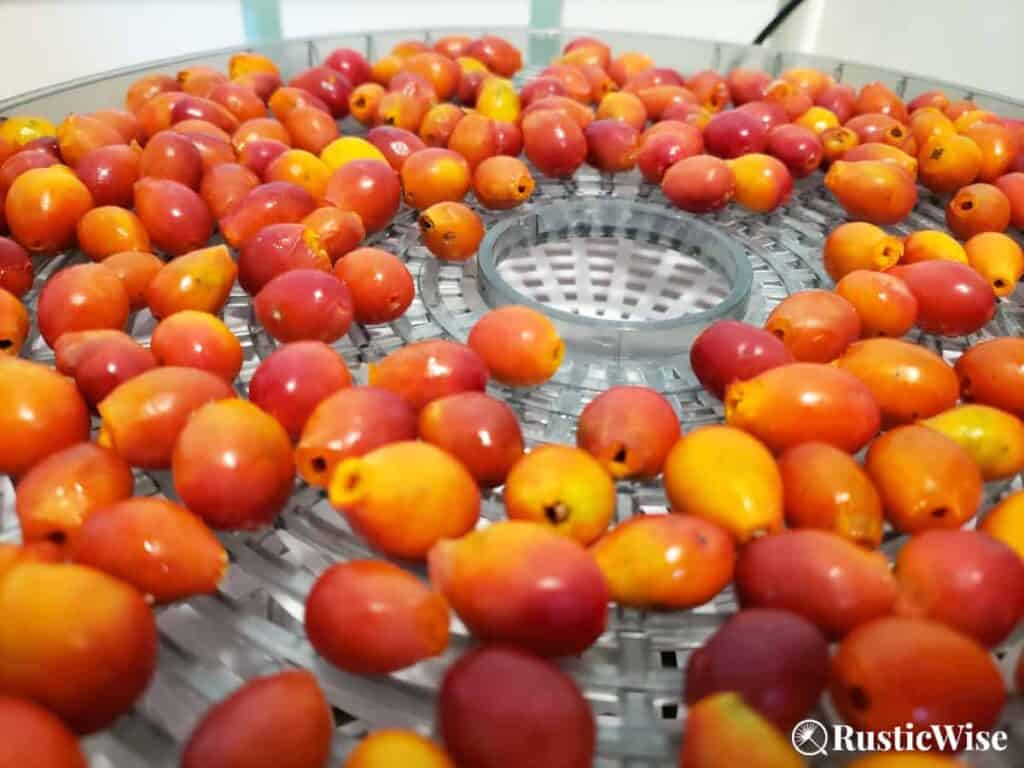
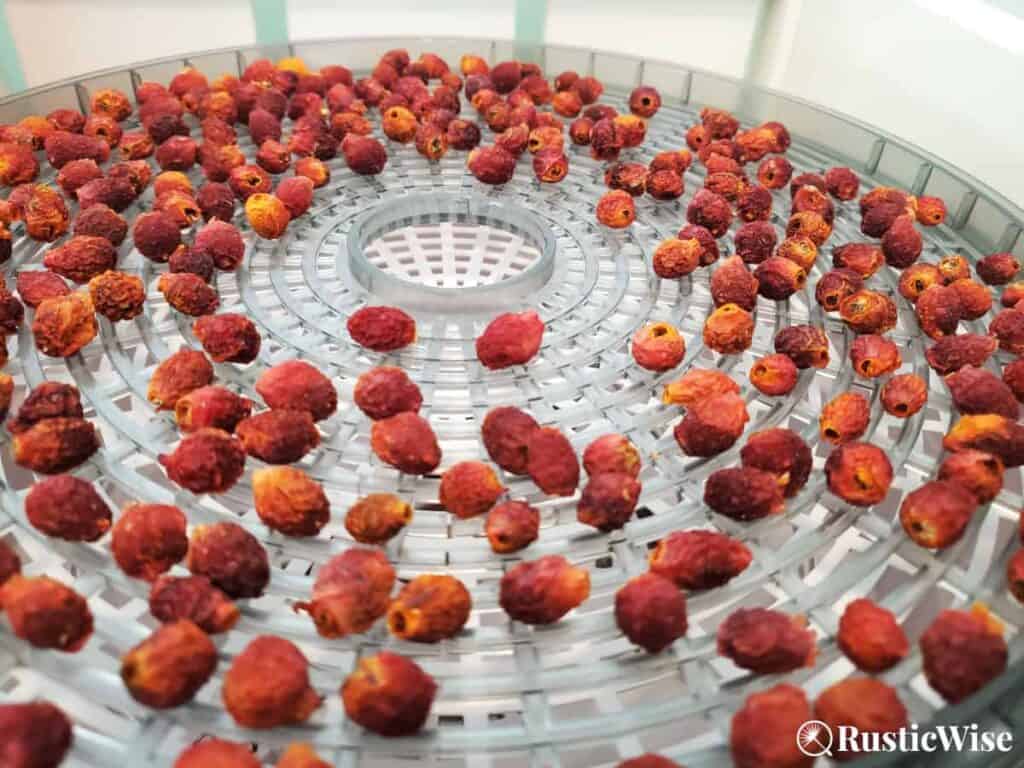
Freezing rosehips
Rosehips are a breeze to freeze. Just toss them into a plastic bag or freezer-safe container. You can also freeze rosehip syrup after it’s fully cooled.
Rosehip tea
You can make rosehip tea using fresh or dried hips. Brewing rosehip tea is an easy way to make use of rosehips and get a healthy dose of vitamin C. Some people enjoy blending a variety of leaves with rosehips to create a richer flavor. Try adding strawberry leaves, mint leaves, or hibiscus with your rosehips.
To make rosehip tea, measure out 1–2 teaspoons of dried rosehips to 1 cup of water; or approximately 1 tablespoon of fresh rosehips to 1 cup of water. Steep rose hips for 10–15 minutes. If you’re using fresh rose hips, you can gently mash with a spoon to extract all the juice. Sweeten with a dollop of honey or brown sugar. Enjoy!
Ideas on how to use rose petals and rosehips
We’ve all heard of rosehip tea, but there are so many ways you can get creative with this tart fruit and fragrant petals to sweeten your culinary creations beyond making tea. Its delicate fragrance and slightly sweet, slightly tart flavor add a nice flavor dimension to cake, puddings, pies, and other sweet treats. Here are a few ideas on what to make with rosehips:
- Rosehip jelly or jam
- Rosehip syrup
- Rosehip soup
- Rosehip wine
- Rosehip brandy
- Rosehip extract
- Rose petal potpourri
- Rose water
- Rose petal brandy
- Rose petals as a garnish on deserts
👉Learn more about the benefits of rosehip tea.
👉 If you like this post, see our Timeless Guide To Foraging for Wild Food. 🌿
Would you like more timeless tips via email?
Fun tips to help you live an independent, self-sustaining lifestyle. Opt-out at any time.


References:
- Emery, Carla (2012). The Encyclopedia of Country Living, 40th Anniversary Edition. Sasquatch Books. ISBN-13: 978-1-57061-840-6.
- Monger, Karen (2015). Adventures in Edible Plant Foraging: Finding, Identifying, Harvesting, and Preparing Native and Invasive Wild Plants. Skyhorse Publishing. ISBN 978-1-63450-407-2.

Author: Theresa Tesolin
Theresa is co-founder of RusticWise. She helps people unleash their inner DIY spirit by encouraging them to get dirty and make or grow something from scratch.

